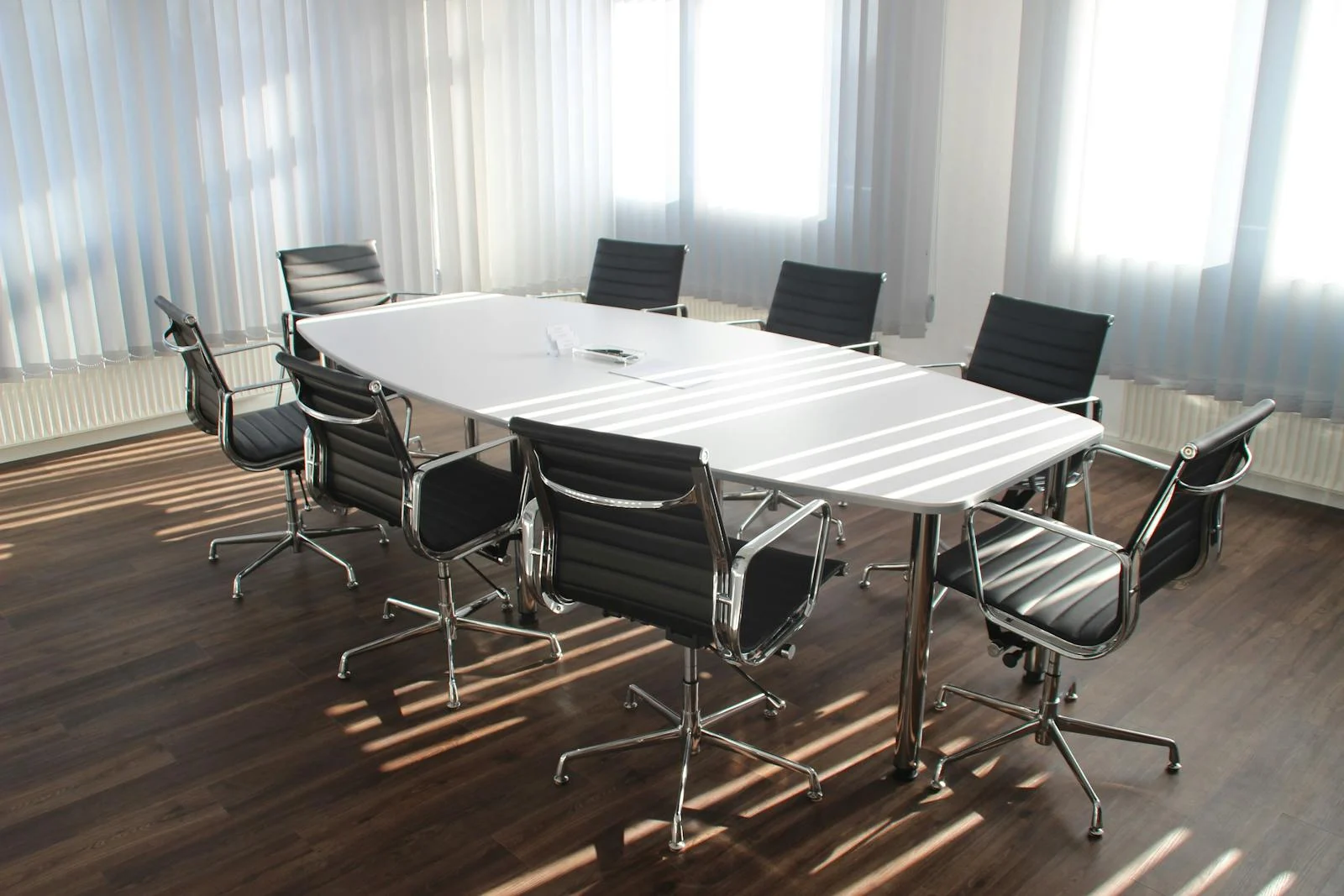Looking to elevate your meeting experience? Learn about top conference room audio and video solutions, from choosing high-quality audio systems to setting up a professional video conference room. This guide offers practical tips for conference video production, ensuring smooth and productive meetings for all participants.
When it comes to holding effective meetings, the right technology can make or break the experience. As businesses evolve and remote work becomes increasingly common, having the right conference room audio video solutions is crucial. But with so many options out there, it’s easy to feel overwhelmed. How do you choose the right setup for your team? How do you create a seamless experience that makes collaboration smoother and more efficient?
I’ve been in your shoes, and today, I’ll walk you through everything you need to know about setting up your video conference room, selecting the best conference room audio video solutions, and boosting the overall quality of your conference video production. Let’s make your meetings more productive, efficient, and—dare I say—fun!

Understanding the Importance of Conference Room Audio and Video Solutions
In today’s business world, communication is key. Whether you're hosting a meeting with a few colleagues in the office or connecting with a team across the globe, conference room audio and video solutions help ensure that everyone is on the same page. But poor audio or video quality can easily cause confusion, frustration, and time wasted.
So, how can you avoid these pitfalls? It all starts with the right equipment and proper setup. Let’s dive into what makes up a good conference room setup and the best practices for improving your meetings.
What Makes a Good Conference Room Audio and Video Solution?
When you think about the perfect conference room setup, it’s not just about fancy technology. It’s about making sure the tools you choose fit the needs of your meetings. Here’s what to consider when selecting your conference room audio and video solutions:
1. High-Quality Audio Systems
There’s nothing worse than a meeting where you can’t hear what’s being said clearly. Whether you’re in the room with colleagues or connecting with remote teams, high-quality audio is essential. Consider investing in wireless microphones, ceiling or desk-mounted speakers, and noise-canceling technology to ensure crystal-clear sound.
LSI Keywords: audio clarity, noise-canceling microphones, wireless speaker systems
2. HD Video and Quality Cameras
Video conferencing is more than just a face-to-face interaction. You want a camera that delivers HD video, offers wide angles, and ensures that everyone in the room can be seen clearly. When choosing a camera, it’s important to consider features like auto-focus, zoom capabilities, and even facial recognition for a more personal touch.
LSI Keywords: HD video quality, conference camera setup, video conferencing cameras
3. Interactive Whiteboards
For many meetings, especially those that require brainstorming, interactive whiteboards like the NearHub Board S55 can be game-changers. These devices allow you to write, draw, and annotate in real-time, whether you're in the room or remote. With features like touch-screen capabilities and cloud connectivity, interactive whiteboards enhance collaboration in a meaningful way.
LSI Keywords: interactive boards, collaborative whiteboard, touch-screen whiteboard
Setting Up the Perfect Video Conference Room
Now that you have a good understanding of the essentials, let’s talk about how to set up your video conference room. Setting up a functional and efficient space is about more than just slapping together some equipment—it’s about creating an environment that fosters smooth communication and collaboration.
1. Choosing the Right Space
Not all conference rooms are created equal. To ensure the best audio and video quality, choose a room with minimal echo and background noise. Look for a space with adequate lighting and avoid rooms that are too small or cramped.
LSI Keywords: room acoustics, lighting for video calls, room setup for video conferencing
2. Positioning Your Equipment
When setting up video conferencing equipment, placement is everything. The camera should be placed at eye level to ensure a more natural interaction. Audio equipment like speakers and microphones should be positioned to capture sound evenly across the room, making sure no one is left out of the conversation.
LSI Keywords: camera positioning, microphone placement, speaker setup
3. Investing in Reliable Hardware
The best conference room setups are only as good as the equipment used. Invest in a quality webcam whiteboard like the NearHub Board S65, which combines a webcam with a whiteboard. This allows remote team members to see both you and your annotations, ensuring they stay engaged throughout the meeting.
LSI Keywords: conference room hardware, webcam technology, whiteboard integration

Enhancing Conference Video Production for Professional Meetings
Effective video production can significantly improve the quality of your meetings. Whether you’re recording meetings for future reference, creating webinars, or even broadcasting large events, enhancing your video production can make a huge difference.
1. Lighting for Video Conferencing
Good lighting is one of the most important factors in creating a professional video experience. Proper lighting helps eliminate shadows and ensures that everyone looks sharp and clear on camera. You can use softbox lights or ring lights to ensure even, flattering lighting.
LSI Keywords: video lighting setup, lighting for professional meetings, camera lighting
2. Camera Angles and Framing
The way you frame your video calls can make a big difference. Ideally, your camera should be positioned so that you’re centered and framed from the chest up. Avoid having distracting elements in the background and ensure that everyone in the meeting is clearly visible.
LSI Keywords: camera framing, video call angles, background management
3. Recording and Streaming
Recording meetings or live streaming events can enhance collaboration and serve as a useful resource for later reference. Invest in a reliable streaming solution and consider using cloud-based software to store your recordings. This way, all team members can access the content anytime.
LSI Keywords: video recording, live streaming, cloud-based recording
Benefits of Integrating Advanced Technology into Your Conference Room Setup
Upgrading your conference room with advanced audio and video technology doesn’t just improve the quality of your meetings—it can also boost productivity, encourage better collaboration, and save time. Let’s explore how.
1. Boosted Team Collaboration
With tools like interactive whiteboards and collaborative video platforms, team members can work together on documents, presentations, and designs in real-time—no matter where they are. This makes brainstorming sessions, problem-solving, and decision-making faster and more efficient.
LSI Keywords: remote collaboration, team collaboration tools, real-time collaboration
2. Reduced Communication Barriers
When audio and video work seamlessly, team members feel more connected. With high-quality audio and video, it’s much easier to understand one another, eliminating the frustration that often comes with poor technology.
LSI Keywords: communication improvement, seamless meetings, clear video conferencing
3. Increased Flexibility
Today’s conference room technology is designed to be flexible, making it easy to scale up or down as needed. Whether you're hosting a small meeting or a large-scale presentation, modern solutions adapt to your needs. This flexibility allows you to tailor your setup to any occasion.
LSI Keywords: flexible setups, scalable conference rooms, adaptable technology
FAQs: Conference Room Audio and Video Solutions
Q: How do I ensure clear audio in a video conference?
A: Clear audio starts with the right microphones and speakers. Invest in noise-canceling microphones and ceiling or desk-mounted speakers for optimal sound quality. Also, consider using a soundproof room or adding acoustic panels to minimize background noise.
Q: What’s the best camera for video conferencing?
A: The best camera for video conferencing is one that offers HD video, wide-angle coverage, and features like autofocus and zoom capabilities. Cameras with facial recognition can also add a personal touch to your meetings.
Q: How can I enhance the overall experience for remote participants?
A: Incorporate tools like interactive whiteboards, which allow remote participants to engage in real-time discussions and collaborate more effectively. Additionally, ensure that your video and audio setup is optimized for remote team members.
Q: What should I look for in a video conferencing system?
A: Look for a system that offers high-definition video, clear audio, easy integration with other tools (like whiteboards and project management software), and a user-friendly interface. It’s also important to choose a system that supports scalability as your team grows.
By following these tips, setting up your video conference room becomes a breeze. Choose the right conference room audio and video solutions, ensure your space is optimized for both in-person and remote communication, and use advanced technology to enhance collaboration. Ready to take your meetings to the next level? The right tools are just a click away.
And don’t forget to explore our 75-inch Smart Board and whiteboard canvas for even more interactive and engaging solutions for your team.












































